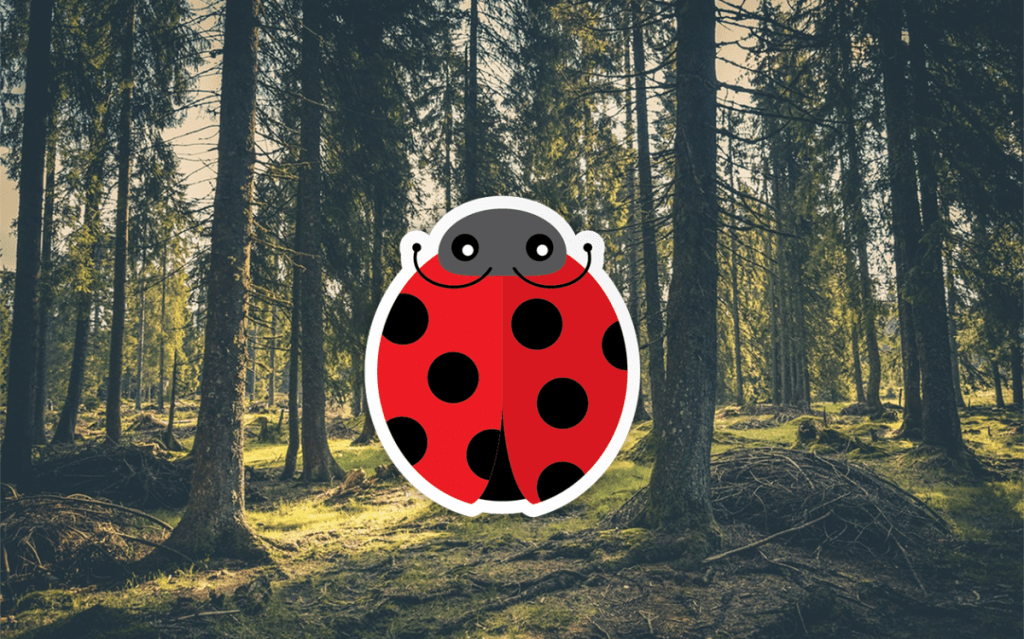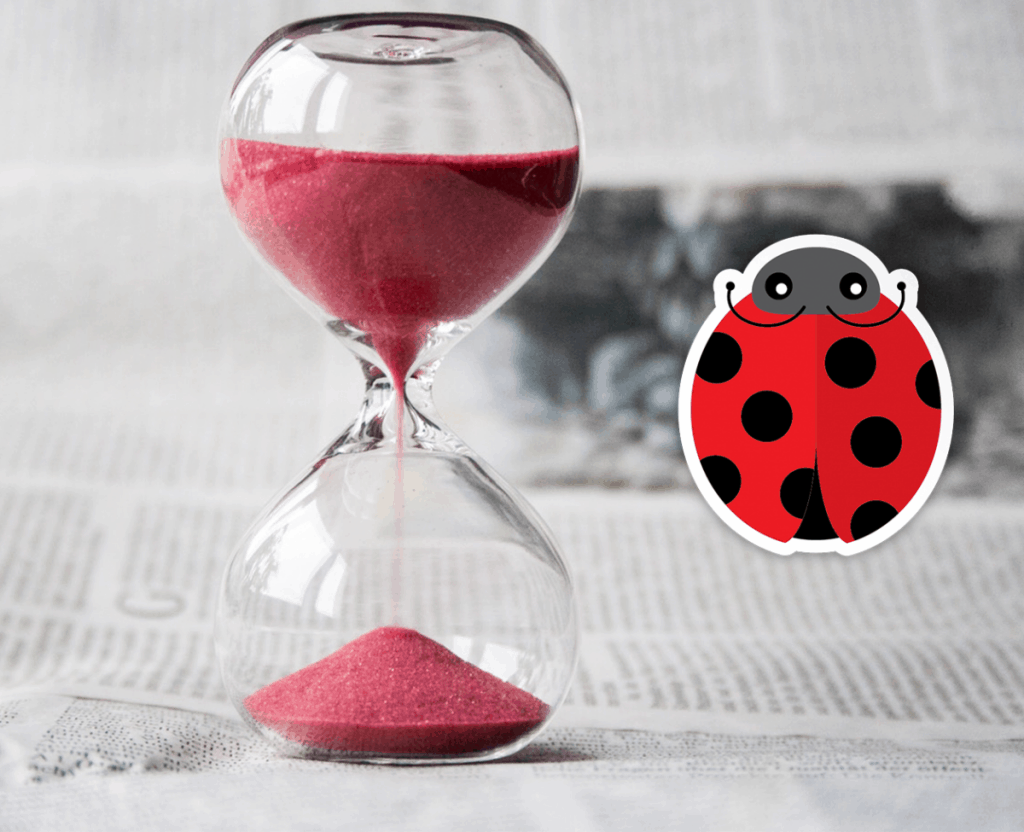
Ladybugs are such a great insect because of their appetite for harmful pests. They love to eat aphids and other soft-bodied insects. In their lifetime, they eat thousands and thousands of insects. Their diet includes aphids, mealybugs, and mites, which are all crop-eating pests.
How Long Does a Ladybug Live Without Food? A ladybug can live as long as they have stored fats in their bodies. The stored fats usually last about eight to twenty weeks when they overwinter. After that, if the ladybug fails to replenish, they will inevitably start weakening, which will then lead to death. If not overwintering, around only two days.
In this article, you will read about some of the reasons why ladybugs would have no food source, their alternative food to eat, some of their eating habits, a brief section about their lifecycle, and as well as their lifespan. You will also learn how they are such helpful creatures in the garden.
Reasons Why Ladybugs Would Have No Food Source
There are plenty of reasons why ladybugs would find no food source. The number one would be winter is approaching where scarcity of food source is a given. Another is when ladybugs are trapped in an enclosed area where there is no food source like your garage or your garden shed. But the winter months are a recurring weather change, and therefore, ladybugs have developed ways on how to survive it. We’ll talk more about that in the next paragraph.
While butterflies would migrate to warmer climates to avoid the freezing temperatures of the winter months, ladybugs choose to stay. What they do is not hibernate but instead form a large group where they diapause (the insect term for hibernation). Diapause is when insects are under suspended arrest. Development is delayed and usually happens during the winter months. It is a form of a survival mechanism that the ladybugs and other insects go through to keep their food consumption low. This state will help the ladybugs get through the winter months.
Alternative Food To Eat For Ladybugs
There will be times when ladybugs are not able to find their preferred food. Remember that these creatures are greedy and are big eaters. Their favorite foods are aphids, other insect larvae and eggs, other beetles, caterpillars, spider mites, and scale insects. These menus of insects are almost always readily available for the ladybugs during warmer temps, but when the weather changes and the temperature begins to drop, finding their favorite meal gets tricky.
Ladybugs have alternative food preferences when their main food is not available. Some alternative food that a ladybug can eat is soaked raisins, flower nectar, honey, and extrafloral nectaries. Ladybugs also lay unfertilized eggs to be a sort of treat for the newly hatched larvae. So that is also part of their alternative diet.
During the diapause period of ladybugs, their food consumption is reduced. They wait out the winter months and then come back out during spring to mate and lay eggs. You’ll seldom see ladybugs forage during the cold months. They will consume their fat reserve and then re-emerge from their hiding spot once the weather warms up. From there, the cycle then repeats until they’ve reached the end of their lifespan.
Ladybugs Life Cycle and Lifespan

To give you a little peek into the life of a ladybug and for you to better understand how they can survive eight weeks without food, we will talk about the lifecycle of this beautiful creature.
Starting with the egg, an adult ladybug will lay anywhere from 10 to 50 eggs in one cluster. Some of the eggs will be unfertilized and will serve as an additional food source for the fertilized eggs when they hatch. However, most of the time, a ladybug will lay her eggs in places where there is an abundant source of food for the young. It has been documented that a female ladybug can lay a total of 1,000 eggs between spring and summer.
In about 4 to 10 days (depending on temperature and species), the ladybug eggs will hatch into larvae. This will be the time when they start to look for a food source, and because mama ladybug placed them in a very strategic place, food is readily available. Ladybug larvae will eat as much as possible, building up their strength for the next stage in their life cycle.
Once a certain weight is achieved (about 15 mg) by the ladybug larvae, it will then start to pupate. This weight gain can take anywhere between one to two weeks, depending on the availability of food sources. What the ladybug larvae do, is it attaches itself to a leaf and begins to pupate. This is where the magic happens. Just like the butterfly, ladybugs undergo a process called metamorphosis.
According to Wikipedia, “Metamorphosis is a biological process by which an animal physically develops after birth or hatching, involving a conspicuous and relatively abrupt change in the animal’s body structure through cell growth and differentiation.” What it means is that a profound biological any physical change happens during metamorphosis.
In the case of the ladybugs, a particular cell is responsible for the significant changes that happened during the pupal stage. This specific cell is called the histoblasts. It directs and controls the whole biochemical process of rearranging and reforming the ladybug larvae into the adult version. This pupal stage lasts anywhere from 3 to 12 days, depending on the temperature.
At first, the adult ladybug that just came out from the pupal stage will have a lighter color and soft exoskeleton, making them an easy target for predators. But with proper diet, their shades will turn into the bright red or orange that we know so well, and their cuticles will harden.
Ladybug Short Lifespan Is Not A Hindrance
Typically, a ladybug can live up to one year, but if the conditions are right, documents are showing that a ladybug can live up to 2 years. Yes, I know, it’s a short life span, but this doesn’t make the ladybug any lesser than other insects.
Ladybugs have a voracious appetite and can eat about 50 aphids a day. That is translated into 5,000 aphids per ladybug in a lifetime. Now imagine having more than just one in your garden, also take into consideration that ladybugs are natural predators and eat crop-eating pests. So even if they can only live 1 to 2 years at the most, the number of plant pests that they eat offset that.
Some farmers, who are very much aware of this kind of voracious appetite that the ladybug has, would sometimes employ ladybug services to help them deal with their crop pests.
Fun Facts About Ladybugs
Here are some fun facts you might not yet know about ladybugs.
- Ladybugs are not bugs. They are actually part of the beetle family.
- There are about 5,000 species, more or less, species of ladybugs around the world.
- Ladybugs can win the Oscars for best actors; they fake death when predators are near. It is part of their defense mechanism.
- The colorful dome-shaped exterior of the ladybug is called the elytra, and it hides the wings of that the ladybugs use for flight.
Conclusion
To summarize the whole article, there are several reasons why ladybugs would have no food source, but the main reason would be because winter is coming. During this time, a ladybug will go into a state called diapause, where their bodily functions are reduced significantly. It this during this time when they consume the stored fats in their body and can last about eight weeks without food.
However, if a different reason is behind the loss of food source, a ladybug is estimated to live just about two days without food. They have a high protein diet and are big fliers, so they consume a lot of energy during their day. There are alternative food for them to eat if the food prefers is not available. These alternative food sources can help them gain more fat so that they can overwinter with no problem.
Their lifespan is pretty short, about one to two years only. But even if they have a short lifespan, their voracious appetite still makes them a gardener’s best friend. They have the ability to eat about 50 aphids in one day. Their diets also include other crop-eating pests, and that is a good reason why they are valued when it comes to dealing with crop pests.
Ladybugs may be small in size, but they have a significant role in our garden. So before you think about capturing that colorful creature you see in your garden, stop and think. Is it worth it really worth it? Wouldn’t it be better to leave that beautiful critter alone and let him deal with your garden pests the natural way?
Just sit back and reap the benefits of having ladybugs in your garden. If they are of no harm to you or your family, then just let nature do its work. It’s a better alternative than killing a beneficial creature.
Recent Posts
Tiny Black Bugs in Bathroom NO WINGS: What They Are and What to Do!
Finding tiny black bugs in your bathroom can be uncomfortable, to say the least. Especially if they are persistent, or they appear in very large numbers, which they often like to do. When it...
Tiny Black Bugs in Plant Soil - What Are They & What To Do About It
A short horror story: You get a new houseplant. You do your best to take care of it. You’ve ensured that it has the right soil, the right amount of sun, it gets enough water. And then one day, you...

